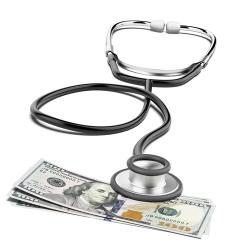 Improving the profitability of a medical practice or any healthcare business that bills third-party medical insurance plans can be difficult. In fact, the constant downward pricing pressures from insurance companies, Medicare, and Medicaid make it challenging to run a profitable practice.
Improving the profitability of a medical practice or any healthcare business that bills third-party medical insurance plans can be difficult. In fact, the constant downward pricing pressures from insurance companies, Medicare, and Medicaid make it challenging to run a profitable practice.
 Improving the profitability of a medical practice or any healthcare business that bills third-party medical insurance plans can be difficult. In fact, the constant downward pricing pressures from insurance companies, Medicare, and Medicaid make it challenging to run a profitable practice.
Improving the profitability of a medical practice or any healthcare business that bills third-party medical insurance plans can be difficult. In fact, the constant downward pricing pressures from insurance companies, Medicare, and Medicaid make it challenging to run a profitable practice.
There are only two ways to increase profits: increase your revenues (or prices) while keeping costs at bay, or keep revenues in line but cut costs. Obviously, you can do a combination of both.
In this article, we review a simple way to increase the profitability of your practice. This approach does not require that you increase prices or that you cut costs dramatically. Furthermore, it should benefit all involved.
You cannot increase prices
First, let’s discuss prices. Increasing prices is out of the question for most medical practices. Most insurance companies negotiate aggressively and are constantly finding ways to pay you less money, while taking longer to send payments. The only exception to this rule is certain large or unique providers in specific geographic areas.
Cutting costs has drawbacks
The alternative is to cuts costs. Actually, you should review your supplier and overhead costs regularly. Keeping costs in line is crucial to the success of a medical practice. However, there is a limit to how much you can cut. Eventually, quality and morale will suffer, which can have negative repercussions for the practice.
Adding new services can be expensive and risky
One alternative for increasing revenue and, hopefully, profits, is to add new services, such as procedures, infusions, etc. However, this option is risky since you never know if the demand will materialize. Furthermore, adding services requires additional investment. Depending on the services you add, it may take some time before you recover your initial investment and start making money.
A simple solution: early payment discounts
Most medical practices pay invoices on standard commercial terms of net-30 to net-45 days terms. Paying in 45 days is good for your cash flow and can help if your practice is running low on funds. However, if your cash flow is good, you can leverage it and get a discount.
One simple way to increase profits by decreasing costs is to ask suppliers if they provide a 2% discount in exchange for early payment. Many suppliers are happy to provide the discount because they need the money.
Keep in mind that while this method is simple to implement and run, you need to do some homework before you get started. Otherwise, if you are not careful, you could experience cash flow problems yourself.
Can you afford early payments?
Before implementing this plan, you must determine if you can afford to make early payments. Determine if your practice has a cash reserve sufficient to cover your regular expenses for a couple of months. Additionally, review your cash flow statements to ensure the medical practice is cash-flow positive.
It’s best to have someone from the finance department, or a CPA, help you make this initial determination. This assessment helps you avoid problems later on.
Whom should you pay early?
Selecting whom to pay early depends on your specific objectives for this plan. If you solely want to improve profitability, prioritize your vendors based on who provides the largest discount. On the other hand, if you also want to improve your commercial credit, consider making early payments to vendors that report information to commercial credit bureaus.
Start slowly and monitor regularly
Implement this plan slowly. Start making early payments to a few vendors while monitoring your cash flow. Increase the number of vendors that get early payments once you are certain your cash flow remains positive.
If you do encounter financial problems, step back from making early payments until the problems are resolved. This approach often fixes things. However, if problems persist, they may have a different origin. For additional information on handling these issues, consider reading “Diagnosing Cash Flow Problems in a Medical Practice” and “How to Finance a Medical Practice with Cash Flow Problems”. Both articles are available at HealthWorks Collective.
medical practice profitability / shutterstock






